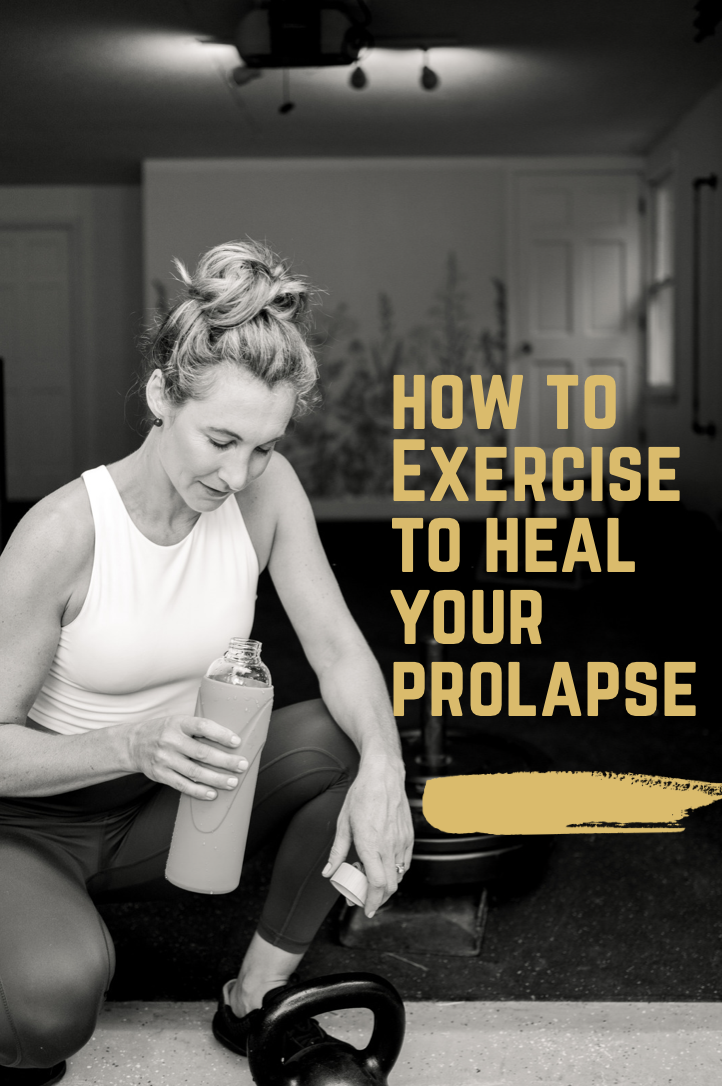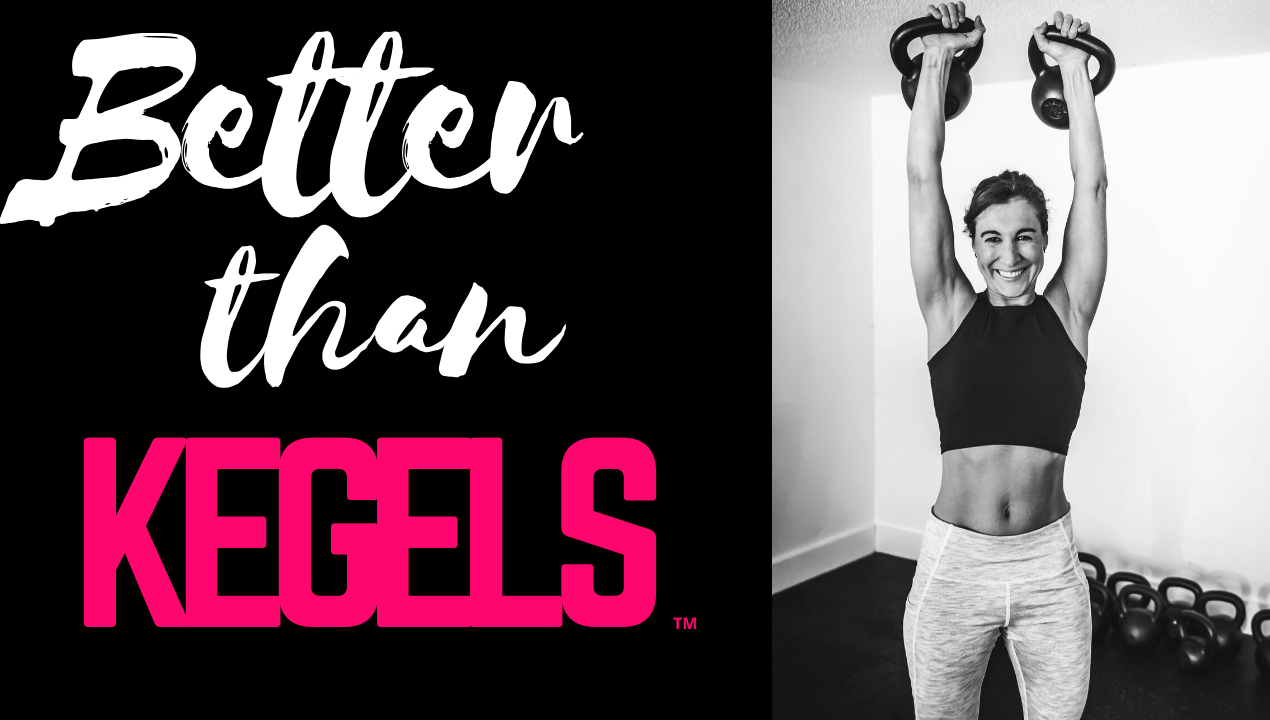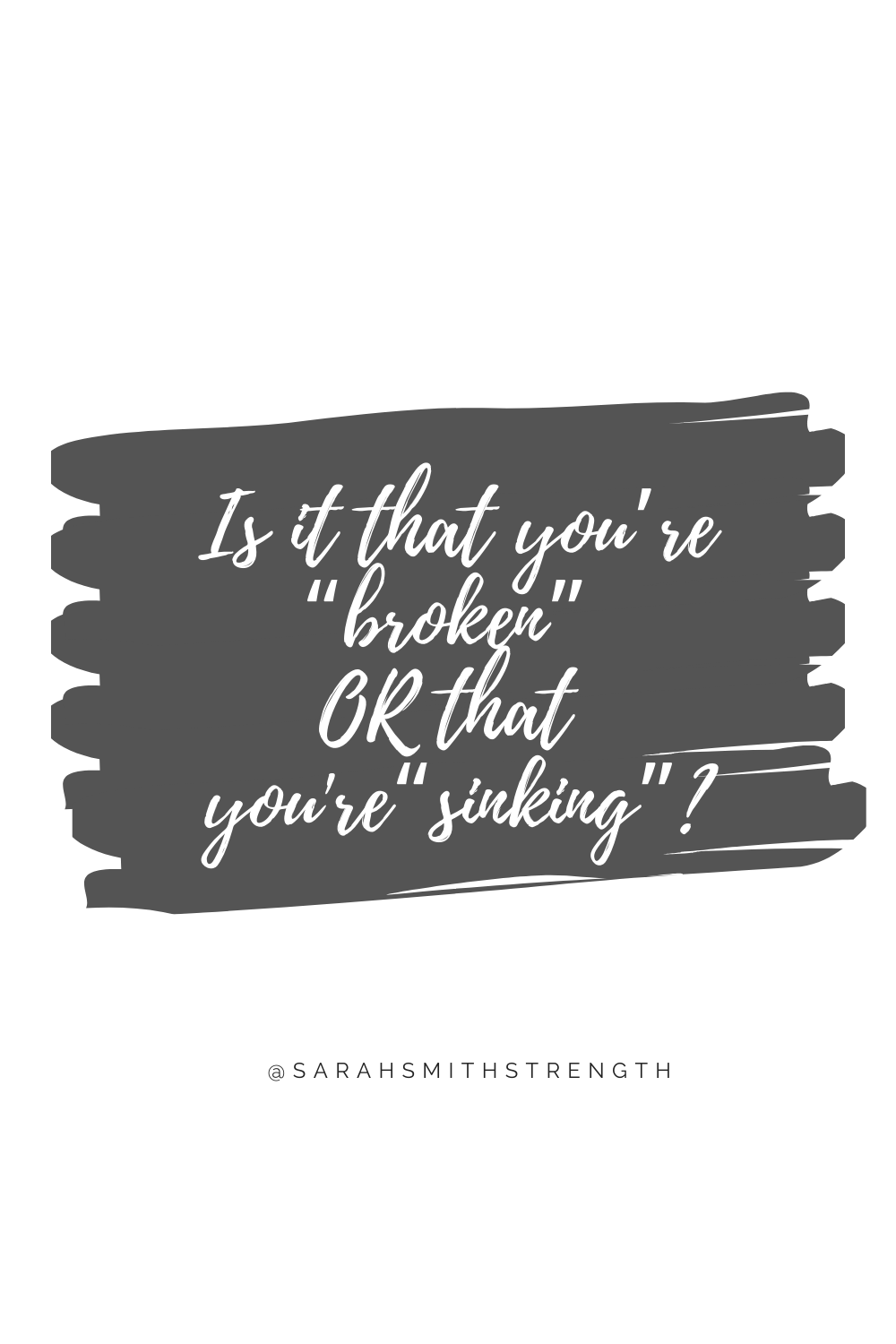For months after my pelvic organ prolapse diagnosis I was distraught, frustrated, depressed and angry.
I was afraid to move, lift, sneeze, squat, bend over, pick up my kids….
I felt lost with absolutely NO direction for how I should go about my days.
Sure my physical therapy had provided me with exercises, but how do I MOVE? How do I LIVE??
There were months of wrestling with all this, up late at night searching on Google, reading forums and articles on prolapse in which all of the information was so doom and gloom….providing no hope whatsoever…
One evening, I was on my computer in middle of night searching furiously for answers or a glimmer of something positive and stumbled upon a forum in which a Crossfitter was posting about prolapse.
She was explaining how she too had prolapse, but had figured out strategies that allowed her to continue training.
I stopped dead in my online tracks.
Someone with prolapse was STILL TRAINING?
Not only that, but they were doing CROSSFIT?
But I had been told not to lift anything, not to walk downhill???
What the heck?!
I immediately felt hopeful, relieved even.
This sparked a desire to become innovative, so that I could get back to lifting!
I started to consider that prolapse, although not really a solvable problem, it was something I could tackle and work with, around or through.
I went to bed that night with feelings of peace and determination, knowing that tomorrow, I was going to start doing things differently.
And so I did.
I stopped researching prolapse and got to work researching the pelvic floor, it’s function in life and fitness.
I realized that if I could better understand how it was supposed to work, then I could try to solve my prolapse problem and at least decrease my symptoms and get back to what I loved, which was lifting.
That lightbulb/hopeful moment for me was in 2016 and it sparked a cascade of mental and physical events.
Five months later I earned my Russian Kettlebell Certification.
Six months after that, I found boldness around this issue and a passion to help other women feel less alone and started speaking out about pelvic organ prolapse and pelvic health struggles publicly online and in my business.
And in another 6 months I earned my Level 2 Russian Kettlebell Certification, an incredibly challenging and physically demanding two kettlebell certification
There was a lot of physical work, healing, rehab, re-learning of movement that went into rehabbing my pelvic organ prolapse and earning my kettlebell certifications, but the single most IMPORTANT change I made in my life was changing how I thought about my prolapse and my body.
Even now, when I have bad days, symptom flare-ups, regrets and frustrations about what COULD HAVE BEEN, it is the MENTAL work that makes ALL of the difference in my life.
And so I’m sharing the FIRST TWO steps from my FREE seminar, Kettlebells Over Kegels: mindset shifts for conquering pelvic organ prolapse.
This seminar is about how I shifted my movement and mental strategies from a place of FEAR and FOCUS on prolapse to a place of PERSISTENCE, DETERMINATION STRENGTH and a SYSTEMATIC understanding of my prolapse in the context of my whole body!
This is the system that worked for me.
Step 1: Stop looking back.
Anyone with prolapse can tell you that anxiety about prolapse intensifies symptoms.
Our fear and feelings of regret ABSOLUTELY fuel these anxious feelings and not only limit or stall our rehab process, but can even make things feel WORSE!!!
You don’t ACTUALLY know what caused your prolapse.
Sure tearing during birth, long labors, gut health and elimination struggles, interventions like forceps and and vacuum suction, high BMI, diabetes and insulin resistance, poor tissue health and hormone struggles are risk factors for prolapse, but what caused those things to happen to us?
Movement mechanics before and during pregnancy?
And inability to relax the pelvic floor before and during labor?
Antibiotics, pathogens, stress or nutrition habits that recked our gut microbiome?
Lack of support during our birthing process??
We could drive ourselves MAD trying to tease out the ACTUAL cause and the reality is that there was most likely a cascade of events and risk factors that got us where we are now.
And we can’t go back.
We can’t reverse time or prolapse.
BUT we CAN absolutely move PAST it and work WITH it!
Looking back and fixating on what was or what should have been, prevents us from moving forward.
It limits our growth because our goal, the direction we are trying to move in, it’s in the past.
It’s an impossible destination.
I think you’re getting that now.
It was when I STOPPED obsessing over mistakes, anger about ALL the things no one ever told me and ALL the things I shouldn’t have done or could have done, that I began to make progress.
I started to funnel all that energy into creating and working towards are new goal: getting back into to movement with prolapse and reducing my symptoms as much as is possible, taking it one day at a time.
I decided that I could blaze a NEW trail, not just for myself but for ALL WOMEN struggling with prolapse!
Because at the end of the day we know two things:
There is NOT enough research on prolapse, the causes and or what ultimately happens to women with the right support,training and therapy.
We, the women of 2019 that have pelvic organ prolapse, we are writing history. We are defining the future of prolapse for ourselves and for others.
We HAVE to believe that.
We HAVE to live that as best we can.
We have to surround ourselves with others that share this belief, so that when we feel like we are floundering, they can ground us.
Step 2. Zoom out, Stop hyper focusing on the pelvic floor and begin to understand the system in which it operates.
For me, laying on a table, kegeling with a machine attached to my body, hyper-focusing on forcing my pelvic floor, all by itself to return to its previous state was NOT working.
In fact, it was making things WORSE.
In the days after my PT, I would experience more symptoms and feel more depressed about my progress, than ever.
This is NOT because PT was bad, but because what I did in physical therapy wasn’t making up for how I was living my life outside of the PT office.
The pelvic floor, just like EVERY OTHER PART OF THE BODY, does NOT work in isolation from itself.
And if you’re like me, even before prolapse, it wasn’t working so great, by itself or with the other parts of my body.
This is why I named this seminar “Kettlebells over Kegels” because to me kettlebells are symbols of:
Functionality
Whole body communication and recruitment
Strong and mindful movement
And THAT’s the approach that informed MY HEALING!
Understanding and working towards improving the functionality of my pelvic floor required that I understand it in the context of my whole body and that I become mindful about how it responded to and supported my daily movements, both in and out of the gym!
Kegels aren’t bad, they’re just like isometrics in exercise.
They have a place and a benefit for teaching your body where you want it to go, but they are only one strategy and they should only be used to teach a particular part of the body what you want it to do in the context of the whole entire system.
They are only one part of the story and for some people, they have no business being in the story at all.
Kegels are ONLY helpful for women that have difficult recruiting their pelvic floor, but not every women with prolapse has that exact problem.
Some women have been kegeling their whole life and still have prolapse.
Some women have SUPER active parts of their pelvic floors while others are weaker and non-responsive and a Kegel alone is not going to help that. It can even make things worse.
Zooming out was an empowering (although a little overwhelming) experience because it helped me to see all of the OPTIONS I had for restoring health and function to my pelvic floor.
If you’ve been spending all of the time since your diagnosis zoomed in on the pelvic floor, trying to force it to comply with your desired for healing and reduction in symptoms, try taking a step back and thinking about ALL the other pieces of health that connect to your pelvic floor.
Diet, nutrition practices, digestion and elimination (pooping)
Stress, anxiety, depression
Breathing habits
Hormone struggles
Daily movement practices
Alignment habits
All of these pieces of your health impact your prolapse and vice versa!
If you’ve hit a wall with your prolapse therapy, try looking at these issues either on your own or with a professional to see if there’s some work that you can do to improve the overall function of your WHOLE SYSTEM.
Everything is connected!
To continue learning about mindset shifts for conquering your pelvic organ prolapse, pre-register for my online seminar here.







































